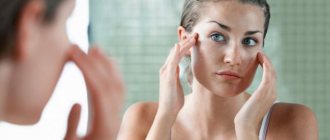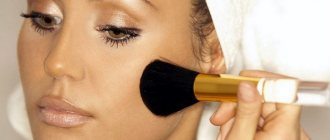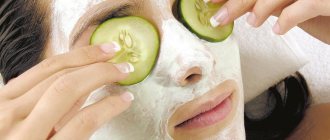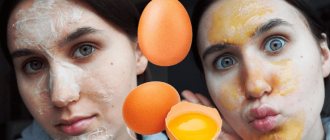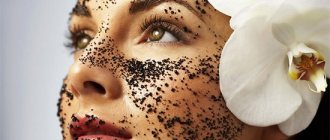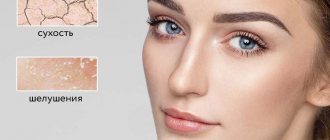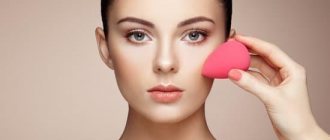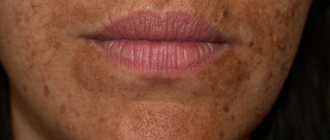Natural and premature aging
Scientists have proven that the type of human aging is determined by nature itself. However, several periods of skin aging can be distinguished. The aging process starts at the age of 25, which is caused by hormonal changes in the body and slower cell regeneration. Of course, at this age the body’s functional reserves are still quite high, so metabolic processes in it proceed quite quickly. The appearance of the first wrinkles at the age of 25 is usually associated with the influence of negative environmental factors on the skin.
Deformation type of aging (“Slavic”)
Signs:
- mostly overweight women;
- the facial contour is deformed due to subcutaneous tissue;
- drooping eyelids;
- the appearance of wrinkles and creases in the décolleté and neck;
- the face sinks to the bottom of the chin, floats (gravitational type of aging);
- "bulldog cheeks";
- the skin is often loose, although there is no pigmentation.
Skin: Combination or often oily skin.
Recommendations: mandatory weight loss with tightening procedures and fitness, proper nutrition, limiting salt and water.
Home care: facial gymnastics, cleansing cosmetics with lactic acid, creams containing vitamins P, C, K and anti-rosacea medicinal creams, nourishing creams with plant extracts of algae, arnica and horse chestnut.
Salon care: sculptural massages, myostimulation, peelings, laser rejuvenation, microcurrents, lymphatic drainage massage, mesotherapy, botulinum therapy, thread lifting.
Clear signs of skin aging
Signs of skin aging become very noticeable by the age of 50: it sags, deep wrinkles appear, and nasolabial folds become very visible. It is worth noting that in old age, the upper layers of the skin usually become very thin, and the level of moisture and oil content in them rapidly decreases. The skin becomes very dry even in those women who had oily skin at a young age.
It is also important that after 50 years the production of hyaluronic acid slows down, which leads to skin dehydration. As the skin begins to produce less and less melanin over time, it becomes sensitive to the effects of ultraviolet rays.
It is impossible to avoid biological aging of the skin except by slowing it down. On the contrary, it is quite possible to avoid premature skin aging, since it is provoked by various external factors. The most harmful external irritants to the skin are:
- free radicals: they are formed under the influence of radiation and ultraviolet rays, changing heredity in cell nuclei and significantly reducing the quality of new cells;
- ultraviolet rays: the danger is that they reduce the number of cells that are responsible for immune defense, which leads to the formation of excess melanin and increased skin sensitivity;
- wind and frost: the skin must be protected from exposure to adverse weather conditions to prevent dehydration and drying out;
- smoking - smokers develop wrinkles in the corners of the mouth at an early age, the skin becomes gray and dry;
- ecology - polluted air has a detrimental effect on the skin, so it needs to be cleansed of contaminants every day.
Wrinkled type of aging

Main signs: subcutaneous tissue is small, the muscle frame is good. The skin, like parchment, is covered with a network of fine wrinkles. The oval of the face itself does not change, but becomes like a “baked apple”, vertical folds of the lips.
Skin: thin, dry skin prone to redness, inflammation and pigmentation.
Recommendations:
- skin prone to moisture loss, so moisturize with creams and maintain humidity in the room;
- food rich in vitamins;
- drinking regime is about 2.5 liters per day.
Home care: creams with phytoestrogens and vitamin A, moisturizers, ultraviolet protection. Serums and creams with Botox effect.
Salon care: gentle fruit peelings, contouring with gel to fill wrinkles, botulinum therapy for wrinkle correction, photorejuvenation, biorevitalization.
External signs of skin aging
Dermatologists distinguish several main types of skin aging. Each of these types is characterized by specific external manifestations. Correctly determining the type of aging is necessary in order to select the most optimal program to eliminate it.
- "Tired Face"
- "Wrinkled face"
- Senile deformity
- Combined type
- Muscular type
- Late aging
This type of aging is characterized by a noticeable decrease in the elasticity of facial tissues, which can be triggered by a variety of factors: constant fatigue, smoking, stress, lack of sleep. Typically, at this stage of aging, wrinkles are still very weakly expressed, and no obvious changes in the contour of the face are observed. After rest and in the morning, the face looks quite young and healthy, but in the evening, after nervous overload and stress, a tired, senile expression appears on it.
This type of aging is short-lived because it is replaced by another within a short time. Its most characteristic signs include swelling of the face, drooping corners of the mouth, and pronounced nasolabial folds. To eliminate the first signs of skin aging, you need to use moisturizing and nourishing creams, eat right and periodically do facial massage.
The most obvious sign of this type of aging is the appearance of wrinkles on the neck and face. They are not always deep and noticeable, but look like a thin mesh. Since the cause of the pathological process is a lack of skin hydration, it becomes excessively dry, “crow’s feet” appear in the corners of the eyes, and small wrinkles form near the lower and upper eyelids.
To prevent the situation from worsening, it is imperative to protect the skin from the harmful effects of environmental factors - wind and sun. In addition, it is worth using moisturizing creams, fluids and serums that penetrate the epidermis well. Hyaluronic acid injections are ideal for eliminating wrinkles.
This type of skin aging is characterized by deformation of soft tissues, as well as changes in the oval of the face. At risk are people who have an increased subcutaneous fat layer, so the manifestations of aging are usually quite pronounced. Due to the loss of elasticity by the skin, it can no longer support the load of the subcutaneous fat layer, so it begins to sag.
The most noticeable manifestations of this type of aging are sagging cheeks, disruption of the facial contour along the lower jaw, the appearance of a double chin, and puffiness under the eyes. In this case, it can be recommended to constantly monitor your weight, since in most cases this type of aging occurs due to sudden weight loss. It is advisable to use cosmetics that have a lifting effect and also stimulate the synthesis of elastin and collagen fibers.
Often it is impossible to diagnose a specific type of aging. In such cases, a combined type is distinguished, which is characterized by both a decrease in the elasticity of soft tissues and the formation of wrinkles. In this case, superficial wrinkles appear first, which then become deeper.
In order to stop this type of premature aging, the production of collagen and elastin should be activated. This can be done using cosmetic procedures such as peeling and mesotherapy. Injections of hyaluronic acid have a beneficial effect on the skin, smoothing it out and making it more elastic.
Typically, this type of aging is diagnosed in people with little subcutaneous fat, who have well-developed facial muscles, and whose skin is elastic and has moderate moisture. In such people, compared to others, signs of skin aging appear much later. This type of aging is characterized by hypotrophy and atrophy of the muscles of the face and skin. In the later stages of aging, this process causes significant shifting of the skin.
The most noticeable signs of muscular aging of the skin include the appearance of crow's feet in the area around the eyes, as well as wrinkling of the lower and upper eyelids. In addition, in later stages a well-defined nasolabial fold usually appears.
In the later stages of aging, due to serious atrophic processes in soft tissues, a change in the oval of the face is observed. Namely, outwardly this is manifested by the following signs: the temples and cheeks sink, the zygomatic and brow ridges move forward a little, the eyes and mouth seem to be deep-set, the ears and nose become enlarged. In addition, the face and neck gradually decrease in size.
An senile face usually looks exhausted and sad, has pointed features, drooping edges of the eyebrows, and drooping folds of the upper eyelids. Defects such as deep wrinkles, seborrheic keratoses, and telangiectasias are usually observed on the skin of the neck and face. It is possible to eliminate some manifestations of this type of aging only with the help of plastic surgery methods.
VIOLATIONS OF PROTECTIVE MECHANISMS
The skin is protected by a lipid (epidermal) barrier; it prevents moisture from evaporating and microbes from penetrating. The effectiveness of the epidermal barrier depends on a complex physiological balance in which nutrients play an important regulatory role.
The stratum corneum on the surface of the skin, the first protective element of this barrier, in case of its violation:
- The skin no longer retains moisture, and it begins to evaporate rapidly. Dryness, tightness, discomfort, peeling, red spots appear, elasticity disappears.
- Ultraviolet radiation from the sun releases large amounts of free radicals into the skin. This oxidation process damages cells, destroys collagen and elastin fibers, and skin hypersensitivity occurs.
- Allergens, toxins and microbes freely penetrate the epidemic barrier. Skin inflammation, acne, rashes, and dermatitis appear.
The skin is subject to genetically programmed aging from birth. Each cell of the body has a limited lifespan, which is determined by genes. For example, fibroblasts produce collagen and elastin fibers in the skin and undergo only 30-50 division cycles during their life. After this, they turn into mature fibrocytes and lose the ability to reproduce substances necessary for skin rejuvenation. Each person's fibroblast life process is different, which is why some people have fewer wrinkles at the same age than others.
In aesthetic medicine, since the 90s, rejuvenation has been carried out using regenerative biotechnologies. Restoring the skin with fibroblasts introduced into the body artificially causes fibrocytes to start working (they seem to return to their original state). Many famous people use the cellular rejuvenation technique. The cost of such a procedure abroad is from 5 to 7 thousand dollars. The Russians even came up with a new type of tourism - going to Europe and America to rejuvenate with fibrocytes.
Theories of skin aging
- Molecular genetic theories
The mechanisms of skin aging are quite complex, so today there are many theories that explain them. One of the most recognized and widespread hypotheses is based on the fact that the cause of skin aging is changes occurring in the genetic apparatus of cells. In science, it is customary to divide molecular genetic theories into two large groups: the first includes theories that consider aging as a hereditarily programmed change in the genome, and the second includes theories that prove that aging is the result of the accumulation of mutations.
Anti-aging face cream
Refers to skin care products and is necessary to slow down skin aging. The choice of cream depends on your skin type and type of facial aging. Creams recommended by experts to prevent premature skin aging:
- Vichy Neovadiol.
- Clinique Repairwear Deep Wrinkle Concentrate For Face & Eye.
- Avene Ysthal.
- Green Mama Golden Root and Vitamin F.
- Eye cream-gel CORA against swelling and wrinkles with Shea butter.
- Cream Laura Evalar.
Different types of facial skin aging require different approaches. In this regard, it is necessary to determine what type of aging you have and help your facial skin accordingly. When using an integrated approach, the effect will be visible much faster.
Remember that fighting premature aging makes sense. Aging can be slowed down, and now there is a large arsenal of tools and procedures for this!
Telomere theory
This theory emerged based on the research of the American scientist L. Hayflick, who proved that skin cells (fibroblasts) are capable of dividing. Namely, in a test tube they can divide up to 50 times. However, the researcher did not explain this process in any way. A.M. gave his explanation for this phenomenon in 1971. Olovnikov. His hypothesis was based on the fact that each time a cell divides, a chromosome shortens.
The fact is that chromosomes have specific end sections (telomeres), which become shorter after doubling. At the same time, sooner or later they shorten so much that the cell stops dividing. Because of this, cells lose their viability. The hypothesis about the shortening of chromosomes and the death of cells due to this formed the basis of the molecular genetic theory of aging.
Scientists were able to confirm this theory in 1985 after the discovery of the enzyme telomerase, which is capable of completing shortened telomeres in tumor and germ cells, thereby ensuring their immortality. However, not all cells have a limit of 50 divisions. For example, stem and cancer cells can divide almost endlessly.
Elevation (ontogenetic) theory of aging
In the 50s of the twentieth century, scientist V.M. Dilman promulgated the idea of the existence of a special regulatory mechanism that is responsible for age-related changes in various body systems. According to this hypothesis, the main link in the development and aging of the body is the hypothalamus. The scientist decided that the main reason for the aging of the body is a decrease in the sensitivity of the hypothalamus to signals that come from the endocrine glands and the nervous system.
Over the next decades, scientists have proven that this process is the cause of age-related changes in the functionality of the reproductive system. Dilman's theory implies that aging and the diseases caused by it are a side process of the body's development. It is important that this model of understanding aging has helped to discover new approaches to the prevention and treatment of many age-related diseases such as malignant neoplasms, strokes, heart disease, metabolic immunosuppression, obesity, diabetes, and mental depression. Scientists have proven that some of these diseases can be inhibited if homeostasis is stabilized at the level that the body reaches towards the end of its development.
Adaptation-regulatory theory
In the 60-70s, scientists V.V. Frolkis developed a theory that proves the genetic programming of aging and death. The main premise of this theory is that human life expectancy and age-related changes are determined by two processes: along with the irreversible aging process, a reverse process also develops, which is aimed at increasing life expectancy, maintaining the vitality and adaptive properties of the body.
A special place in this theory is also occupied by the hypothesis that the main mechanisms of human aging may be disturbances in the functioning of genes that are responsible for the activity of structural genes. Due to age-related gene dysregulation, changes in the ratio of synthesized proteins in the body occur, as well as the appearance of proteins that were not previously synthesized.
The scientist also put forward a hypothesis confirming that the aging mechanisms he described underlie such age-related pathologies as cancer, diabetes, atherosclerosis, Alzheimer's and Parkinson's diseases. Depending on which function of a particular gene was activated or suppressed, a certain pathology of aging develops.
This group includes theories that prove that aging is the result of a number of random processes occurring at the molecular level. Namely, many scientists have proposed many hypotheses confirming that aging is the result of the accumulation of mutations in chromosomes due to wear and tear of the DNA repair mechanism.
Free radical theory
In the 50s of the twentieth century, almost simultaneously the ideas of scientists D. Harman and N.M. were presented to the public. Emanuelema. These theories explain both the mechanism of aging of the body itself and a large range of pathological changes associated with it (cardiovascular diseases, brain dysfunction, weakened immunity, cancer, cataracts). According to scientists, the cause of aging is free radicals, which are reactive oxygen species synthesized in mitochondria.
If a chemically active and aggressive free radical leaves its place for any reason, it can lead to damage to proteins, lipids, RNA and DNA. It is worth noting that nature has developed a system for protecting the body from free radicals - for example, many substances that enter the body with food have antioxidant properties. Therefore, it is believed that regular consumption of such foods provides the necessary daily dose of antioxidants. However, it must be remembered that an overdose of such substances can lead to an acceleration of oxidative processes in cells.
Error catastrophe theory
American scientist M. Szilard in 1954 put forward the theory of aging of the body due to an error. For a long time he studied the effects of radiation on living organisms. As a result of these studies, he found that radiation significantly shortens life expectancy. Under its influence, various mutations occur in DNA molecules, which, according to the scientist, are the main cause of aging.
However, the scientist did not describe the mechanisms of aging of people and animals that were not exposed to radiation. A follower of this theory, L. Orgel, believes that mutations in the genetic apparatus can occur both spontaneously and under the influence of various aggressive factors such as ultraviolet radiation, ionizing radiation, and exposure to viruses. In addition, over time, the DNA repair system wears out, which is why the aging process is activated.
Apoptosis theory
This theory was proposed by scientist V.P. Skulachev. It is based on apoptosis, a process of cell death that has been programmed in advance. It is believed that, like trees shedding parts to preserve the whole, over time, each cell, after completing its life cycle, must die. The destruction of a cell can be triggered by infection with a virus or the onset of mutation processes in it, which provoke its malignancy. A cell can die because its life has reached the end of its life. The death of the cell occurs so that it does not infect the entire body.
Moreover, this process differs significantly from necrosis, in which cells die violently due to poisoning, injury, burn, or lack of oxygen due to blockage of blood vessels. On the contrary, as a result of apoptosis, the cell independently disassembles into separate parts, after which neighboring cells use these parts as building material.
Similar self-destruction occurs with mitochondria. The reason for this is the formation of excessive amounts of free radicals. When the number of dead mitochondria becomes quite large, their breakdown products provoke cell poisoning and apoptosis. According to scientists, aging is a consequence of the fact that more cells die in the body than are born. In this case, the dead cells gradually begin to be replaced by connective tissue. Old age is a real disease that can be cured if the aging program that shortens a person's life expectancy is disabled.
Photoprotectors
Excessive exposure to ultraviolet rays on the skin leads to very serious consequences: the appearance of wrinkles, spider veins, acne, changes in skin elasticity and texture, and exacerbation of dermatosis. However, it is worth noting that photoaging can be reversed if you choose the most suitable skin care program. But you can get rid of the signs of photoaging only in the early stages.
To prevent early skin aging, photoprotection is used - a whole range of measures aimed at significantly reducing doses of harmful ultraviolet radiation. One of the most important and effective measures is to significantly reduce the time spent in the sun. In particular, in summer it is advisable not to sunbathe from 10 am to 4 pm. It's also a good idea to wear summer clothes that cover most of your body, as this is similar to wearing SPF-8 cream. Photoprotectors, which can be endogenous or exogenous, also play an important role in sun protection.
Endogenous photoprotectors include those that are taken orally. Such substances have a strong anti-inflammatory and antioxidant effect on the skin, thereby promoting cell regeneration and reducing the number of free radicals. Such protective substances include selenium, vitamins C and E, beta-caratine and retinol. In addition, some medications can protect against sun exposure: antihistamines, aspirin, systemic corticosteroids.
Exogenous photoprotectors are products that are applied to the skin to protect it from ultraviolet radiation. They are usually presented in the form of various emulsions, oils, and creams. All of these photoprotectors use two groups of chemical compounds. The first group includes screens that are considered mineral compounds by their chemical nature. These photoprotectors are capable of refracting and reflecting solar rays, as well as partially neutralizing solar energy. Such substances usually include iron oxide, titanium dioxide, and zinc dioxide.
The second group of photoprotectors includes substances that are organic compounds. These substances are able to absorb ultraviolet rays. Products are used to protect against UVA and UVB rays. As for products intended to protect against UVA rays, they are represented mainly by benzophenols and dibenzoylmethanes, which can penetrate well into the deep layers of the skin. Anti-UVB rays include salicylates, camphor derivatives, and PABA.
Tired type of aging

Signs: mainly women with an oval face type who are prone to thinness. This is a natural form of aging. Fatigue often takes its toll. In the morning a person looks good, but in the evening there are signs of fatigue with a change in complexion (tired type). Muscle tone is weak, nasolabial folds, skin elasticity is impaired and the corners of the lips droop downwards.
One of the types of tired aging is the edematous (pasty) type. Caused by fluid retention in the body, swelling on the face that does not go away.
Skin: normal or combination.
Recommendations: get plenty of rest, get a good night's sleep, walk outside to supply the blood with oxygen, a salt-free diet and less water are recommended, periodic recovery in a sanatorium.
Home care: creams with vitamin C and fruit acids, serums for collagen synthesis, fillers with hyaluronic acid.
Salon care: you can use tonic massages, microcurrents, myostimulation, chemical peels, mesotherapy. In case of swelling, any cosmetic injections are contraindicated.
Hydration
The cause of early wrinkles is often poor facial skin moisture. Skin loss of moisture occurs due to the negative impact of various external factors - atmospheric and climatic phenomena. In addition, air polluted with aggressive chemical compounds has a detrimental effect on the epidermis. Excessively low humidity usually causes the body to lose water. Increased humidity provokes the production of sebum.
It is believed that even with very high humidity, the skin should still be protected from drying out, so it constantly needs good hydration. Low temperatures and low humidity also pose serious dangers to facial skin. Often the skin becomes dry due to exposure to wind. As a result of this impact, it becomes thin and begins to peel off. That is why, to prevent skin loss of moisture, it is necessary to regularly use moisturizing cosmetics.
However, it must be remembered that the older a woman is, the drier her skin becomes. Even if a woman had oily skin at a young age, by the age of 50 it will turn into dry. Therefore, over time, additional effective moisturizing of the skin is necessary, which will be very difficult to achieve with conventional creams. The most effective way to completely moisturize the skin is to inject hyaluronic acid into it.
To eliminate signs of skin aging, a biorevitalization procedure is ideal, during which the patient is injected into the epidermis with hyaluronic acid, the concentration of which is as close as possible to the most natural for the body. It is for this reason that this substance is not rejected by the body, and also has a beneficial effect not only on the problem area, but also on the tissues adjacent to it.
The results of this procedure are simply amazing: the skin becomes more elastic and tightened, then shallow wrinkles disappear, and more pronounced wrinkles become less noticeable. It has been proven that just one molecule of hyaluronic acid can hold at least a thousand molecules of water. Therefore, after introducing the substance under the skin, it is very powerfully moisturized, which has a prolonged effect.
Please note that hyaluronic acid injections are a completely painless procedure. At a young age, this acid is actively produced by the body, but over the years the process of its accumulation slows down. It is for this reason that many women over 30 years old experience the first signs of skin aging - sagging and wrinkling. In modern cosmetology, there are also non-invasive methods of introducing hyaluronic acid. These include hardware techniques - ultrasound, aquaphoresis, laser.
Muscular or muscular type of aging

Signs:
- mainly in Asian women, sometimes in women with large facial features;
- there is no subcutaneous fat on the face, facial expressions are well developed;
- fatty tissue becomes thinner;
- the oval of the face is not deformed;
- the skin is smooth but pigmented;
- the corners of the lips are lowered;
- the freshness of the face is not lost;
- goose bumps around the eyes are noticeable;
- no sagging, but folds around the nose and lips.
Skin: normal, sufficiently moisturized.
Recommendations: contrast dousing with water, ice cubes, relieving muscle hypertonicity with gymnastics, food rich in magnesium and vitamin A.
Home care: massage, relaxing treatments, creams with hyaluronic acid.
Salon care: laser rejuvenation, microcurrents, ultrasound, mesotherapy, chemical peels, massage, Botox, plastic surgery with hyaluronic acid.
